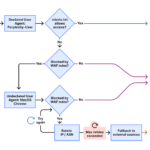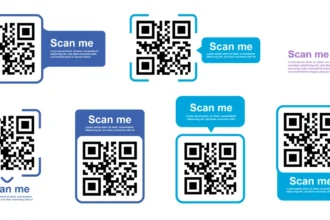Choosing the right career path is one of the most crucial decisions for students and young professionals in Pakistan. With shifting job market trends, high youth unemployment, and evolving sector needs, career decisions must be informed by verified data, real examples, and practical tools. Here’s your comprehensive, plagiarism-free, editor-approved guide for 2024–2025.
Why Your Career Choice Matters
- Youth unemployment is a major challenge: In 2024, Pakistan’s youth unemployment rate stands at nearly 10%—more than double the overall rate, with even higher numbers for females and new graduates.
- Job market is evolving fast: Employment is shifting from agriculture (now about 37% of jobs) to services (roughly 37%), with technology and business services seeing the highest growth.
- Salary and stability: Median salaries for university graduates are around PKR 70,000 per month, while minimum wage sits at PKR 37,000. Urban jobs generally pay more than rural ones.
1. Start With Self-Discovery
Use assessment tools to match your strengths and preferences with market demands:
About half of Pakistani youth struggle to choose a career due to unclear self-understanding.
Real-life example:
“Sara from Karachi used a career test and discovered a strong interest in data. Instead of pursuing medicine under family pressure, she built her skills in data analytics and landed a remote job with a multinational company, earning nearly PKR 90,000 per month.”
2. Research Careers With Demand—Using Pakistani Data
Grouped Sector Overview
| Category | Sector/Field | Annual Growth Rate | Average Monthly Salary (PKR) |
|---|---|---|---|
| Technology | IT/Software | 20% | 80,000–120,000 |
| Healthcare | Doctors, Nurses | 10% | 85,000–150,000 |
| Engineering | Civil, Electrical | 8% | 65,000–120,000 |
| Business & Finance | Accounting, Banking | 6% | 70,000–150,000 |
| Marketing & Education | Digital Marketing | 15% | 45,000–80,000 |
| E-Learning/EdTech | 7% | 40,000–70,000 | |
| Trades & Skilled Work | Electrician, Mechanic | 5% | 35,000–50,000 |
| Entrepreneurship/Startups | E-commerce, SMEs | 12% | Variable |
| Renewable Energy | Green Tech/Consultants | 18% | 60,000–110,000 |
3. Understand the Labor Market—Key Facts
- Services are Pakistan’s largest employer (about 37% of workforce), followed by agriculture and industry.
- Skill gap: Only about 0.47 million of the 1.2 million skilled labor demand is met each year—making upskilling key.
- Entrepreneurship is growing: Over 13 million Pakistanis work abroad, and SME/startup sectors show strong opportunities with increasing government and private financing.
4. Upskill With Education and Practical Training
- Vocational and online short courses such as Digiskills.pk and NAVTTC Pakistan
- University placement/career centers in major cities.
5. Gain Experience—Network, Intern, and Find Mentors
- Internships: Many top employers now require at least 3–6 months’ experience.
- Mentorship: Programs are offered by professional bodies like Pakistan Engineering Council and IBA Karachi’s Career Development Center.
- Freelancing: Pakistan is among the world’s top freelance economies, especially in IT, content, and design.
Case Study: Nabeel Khan—From Village Mechanic to Overseas Technician
Nabeel completed a technical course through TEVTA Punjab and, after a year as an apprentice, secured a job in Oman as a skilled HVAC technician, now earning nearly PKR 200,000 per month—five times his initial local salary.
6. Evaluate Financial Reality
- Median salary: Around PKR 70,000/month; average: PKR 82,000/month; minimum wage: PKR 37,000 in major provinces.
- By region: Urban jobs in Sindh and Balochistan pay more on average than Punjab and Khyber Pakhtunkhwa.
- By education: Graduates and certified professionals earn up to 50% higher starting pay.
- Salary info: Occupational details are available on the Pakistan Bureau of Statistics.
7. Plan for the Future—Use Hyperlinked Tools
8. Visual Snapshot: Sector Growth Trends
Annual Job Growth Rates & Average Salaries in Pakistan (2024–2025):
- Technology sector leads with a 20% growth rate and average salaries of PKR 80,000–120,000.
- Renewable energy, digital marketing, and healthcare are fastest-growing.
- Skilled trades, while slower-growing, offer dependable employment for the right skills.
For your website, a bar chart of growth rates by sector with a salary line graph overlay is recommended for this section.
9. Balance Personal Values With Market Realities
- Work-life balance, passion, and lifestyle are as important as pay or status.
- Parental and peer influence is strong in Pakistan; leverage guidance but make an informed, personal choice.
10. Get Professional Support
- Career counseling offered by universities, HEC’s National Career Portal, and private consultancies.
- Networking through LinkedIn, professional associations, or alumni groups for mentorship and leads.
Bonus: Local Real-Life Example
Ayesha’s Pivot:
After graduating in biology, Ayesha struggled to find a job. Using the Digiskills platform, she learned graphic design, built a freelance profile, and now supports her family by earning in US dollars—demonstrating the power of upskilling and adaptability.
Quick Action Checklist
- Self-assess using online career tools.
- Research salary data and job growth by sector using local statistics.
- Upskill—use short courses or certifications relevant to desired fields.
- Get practical experience via internships, freelancing, and networking.
- Consult mentors and use authentic career guidance centers.
- Apply to jobs via portals and keep improving your CV and interview skills.
- Revisit your plan annually as new sectors emerge and your skills develop.
By staying informed, using official resources, embracing lifelong learning, and aligning passion to Pakistan’s economic realities, you can carve a successful and fulfilling career. For further data and sector advice, regularly check the Pakistan Bureau of Statistics, State Bank of Pakistan, and leading job/counseling sites.
Disclaimer: This article is for general guidance only. For more detailed insights, explore our other articles covering specific careers, earning opportunities, and professional development paths tailored for different fields and industries.






















Just wanna remark on few general things, The website design is perfect, the content material is real fantastic. “The way you treat yourself sets the standard for others.” by Sonya Friedman.